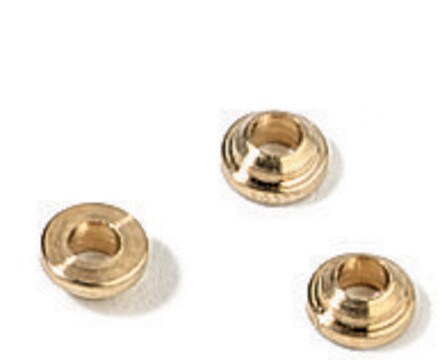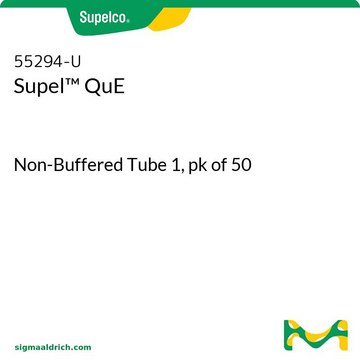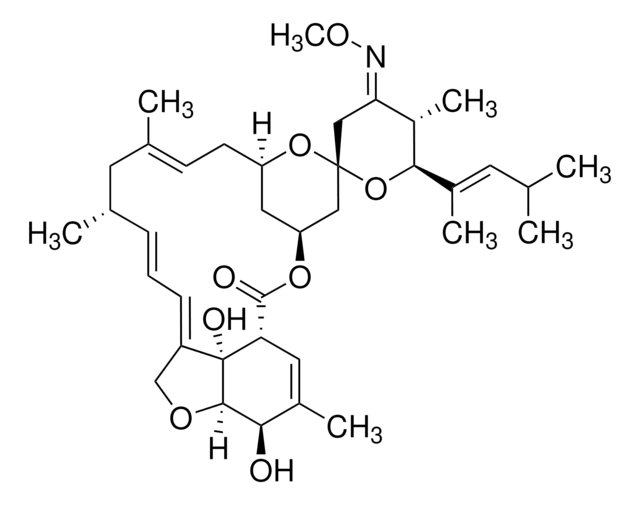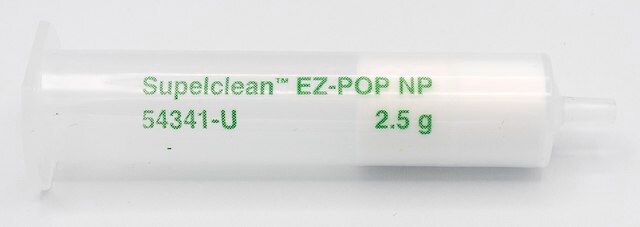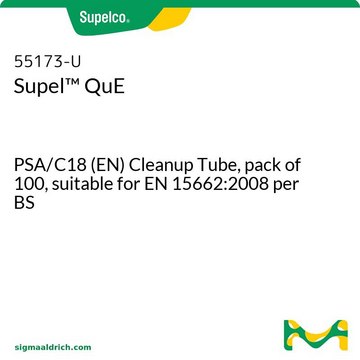55227-U
Supel™ QuE QuEChERS tube
Citrate Extraction Tube, pk of 50, suitable for EN 15662
Synonym(s):
QuEChERS
About This Item
Recommended Products
Product Name
Supel™ QuE, Citrate Extraction Tube, pk of 50, suitable for EN 15662
material
polypropylene tube
Quality Level
Agency
suitable for EN 15662
product line
Supel™
composition
magnesium sulfate, 4 g
sodium chloride, 1 g (Cat. No. S7653)
sodium citrate dibasic sesquihydrate, 0.5 g (Cat. No. 71635)
sodium citrate tribasic dihydrate, 1 g (Cat. No. S4641)
packaging
pk of 50
technique(s)
QuEChERS: suitable
centrifuge tube volume
15 mL
application(s)
food and beverages
separation technique
ion exchange
Looking for similar products? Visit Product Comparison Guide
General description
Using the QuEChERS method, food/agricultural samples are first extracted with an aqueous miscible solvent (e.g., acetonitrile) in the presence of high amounts of salts (e.g., sodium chloride and magnesium sulfate) and/or buffering agents (e.g. citrate) to induce liquid phase separation and stabilize acid and base labile pesticides, respectively. Upon shaking and centrifugation, an aliquot of the organic phase is subjected to further cleanup using SPE. Unlike traditional methods using SPE tubes, in dispersive SPE, cleanup is facilitated by mixing bulk amounts of SPE (e.g., Supelclean PSA, ENVI-Carb, and/or Discovery DSC-18) with the extract. After sample cleanup, the mixture is centrifuged and the resulting supernatant can either be analyzed directly or can be subjected to minor further treatment before analysis.
Supelco carries a line of vials and centrifuge tubes containing pre-determined amounts of salts and SPE sorbents to support the most common method configurations used today.
Application
Suitability
Legal Information
Application
required but not provided
Storage Class Code
13 - Non Combustible Solids
WGK
WGK 1
Flash Point(F)
Not applicable
Flash Point(C)
Not applicable
Choose from one of the most recent versions:
Already Own This Product?
Find documentation for the products that you have recently purchased in the Document Library.
Customers Also Viewed
Articles
Compared to conventional PSA/C18/GCB cleanup, cannabis extracts cleaned with the Supel QuE Verde mixture showed lower GC/MS background, and better recoveries for many pesticides.
The comparison of Supel™ QuE Z-Sep/C18, PSA/C18, and PSA QuEChERS sorbents, in terms of color removal and analyte recovery, is described for the cleanup of oranges prior to pesticide analysis.
Pistachios contain approximately 45% fat, which can result in a significant amount of coextracted matrix in the acetonitrile extract generated using the QuEChERS procedure. A zirconia based adsorbent significantly reduces coextracted matrix prior to LC-MS or GC-MS.
A procedure for cleanup of green tea extracts provides low background and allowed for the analysis of more pesticides at lower levels than QuEChERS. Uses less solvents and no toluene.
Protocols
A highly selective and sensitive analytical method was developed for chloramphenicol using a QuEChERS type sample preparation approach and LC-MS/MS detection.
Related Content
QuEChERS is a ‘Quick, Easy, Cheap, Effective, Rugged and Safe’ sample cleanup method used to prepare food and agricultural samples for pesticides analysis. QuEChERS is based on the Solid Phase Extraction (SPE) technique of sample preparation.
QuEChERS method simplifies sample cleanup for pesticides analysis in food and agricultural samples.
Solid phase extraction purifies samples for chromatographic analysis, improving data quality and protecting analytical columns.
Chromatograms
application for HPLCapplication for HPLC, application for SPEOur team of scientists has experience in all areas of research including Life Science, Material Science, Chemical Synthesis, Chromatography, Analytical and many others.
Contact Technical Service


